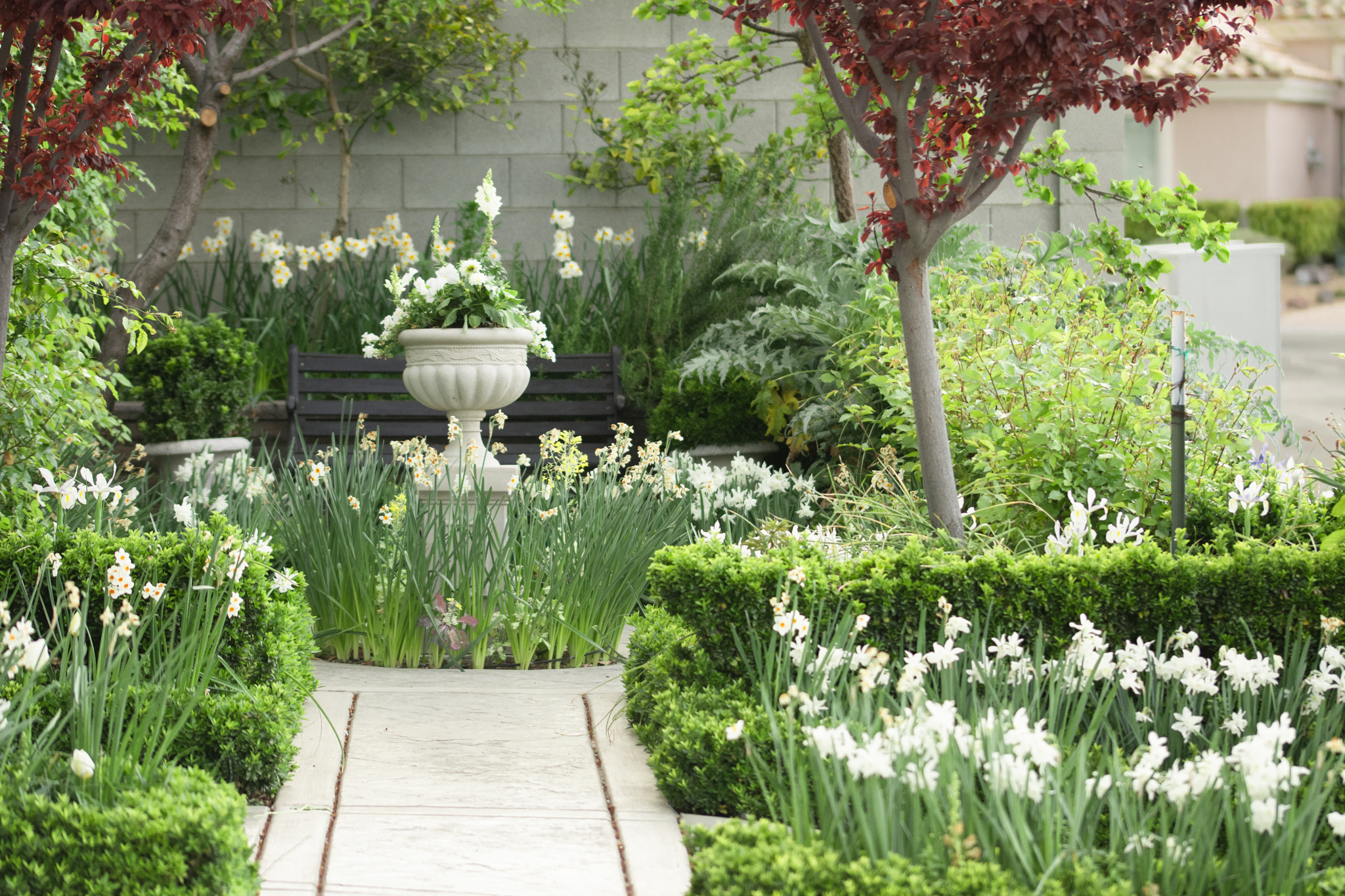
Sometimes we think our yard is too small to really have a garden. Usually we don’t want to give up beauty for the practicality of food.
You needn’t sacrifice beauty to have a garden that provides nourishment to both body and spirit. The trick is to design a space that will fulfill both needs.
There are many different ways to approach designing this kind of yard. For instance, you can have a cottage garden, with flowers and vegetables all jumbled together.
However, I’ve always liked formal gardens.
Formal gardens and rows of vegetables just seem like they don’t go together.
Or do they?
Let’s look at an example from a fort from the 1700s in Canada. This large garden, called the Engineer’s Garden, is both beautiful AND edible!
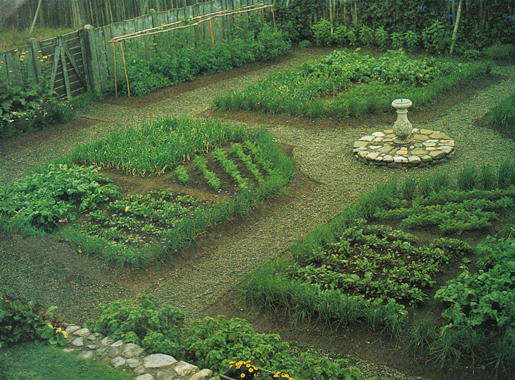
Despite the fact that the entire garden is meant to sustain life, it is a delight to behold.
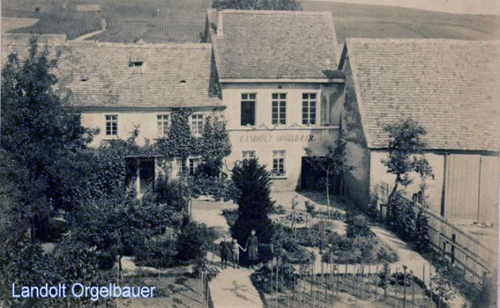
In the picture above, you can see the formal design of my husband’s ancestors’ garden. You can see fruit trees on the left, and poles on the right (probably for pole beans or peas). This beautiful garden was also very practical, providing food behind their home and organ factory (this ancestor made church organs in Germany for a living). From the children in the picture, you can see that they could play on the paths in between the garden beds.
The Chateau de Villandry has probably the most beautiful formal kitchen garden in the world. You can see it here.
Many homeowners don’t have a yard that large. I certainly don’t, but that doesn’t mean I can’t recreate the same shapes and ideas on a smaller scale. In fact, my garden is quite similar in shape to the Engineer’s Garden. In my backyard, I left room for a lawn for my children to play on as well, but that doesn’t mean you have to. Because we homeschool, my yard is my children’s playground. I love having a yard that they can run around in. In the front yard, our garden has no grass, but has formal beds and paths.
I also want to use every inch of space possible in my planting beds. I use the walls as well. Think of your walls (or fences) as a place to grow things. George Washington grew cordoned apples and pears along his fences.
On my walls, I am growing apples, pears, grapes, sugar snap peas, blackberries, green beans, and roses.
You can take the everything edible approach, or you can mix things up.
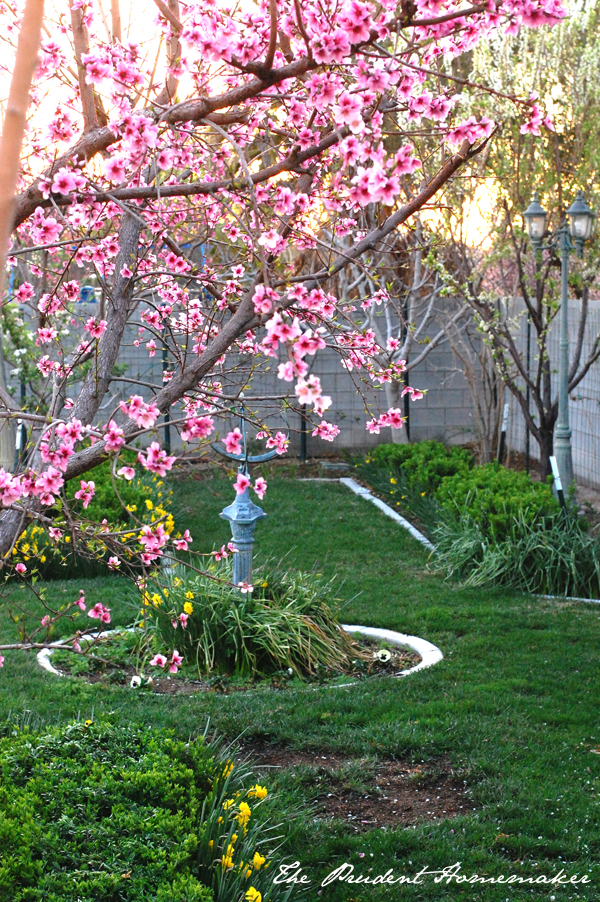
This is my garden . It varies with the seasons, but my goal is to grow as much as possible, all year long, in my current space. (See my garden calendar here). I want to have something to harvest at all times. I have a .24 acre lot. My house sits close to the street, so most of my space is in the backyard, which I love.
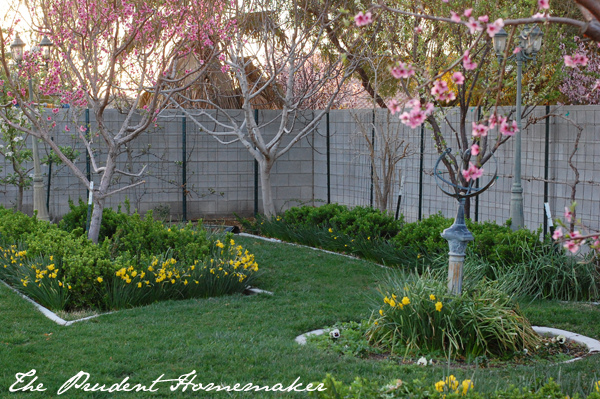
In my backyard, I have 43 fruit trees. Fifteen apple trees are espaliered on one wall. Two pear trees are espaliered on another, and grapes cover the remainder of that wall.
In this yard, all of my trees are fruit-producing trees. Most are semi-dwarf trees. The advantage of having smaller trees is three-fold: they fruit sooner than full size trees (by a few years); they take up less room, allowing you to have more varieties of fruit throughout the year, ripening at different times; because they are shorter, you don’t need giant ladders to harvest the fruit. My goal was to have a good variety of fruits that would provide fresh fruit at all different times of the year, and have enough that I can can any extras.
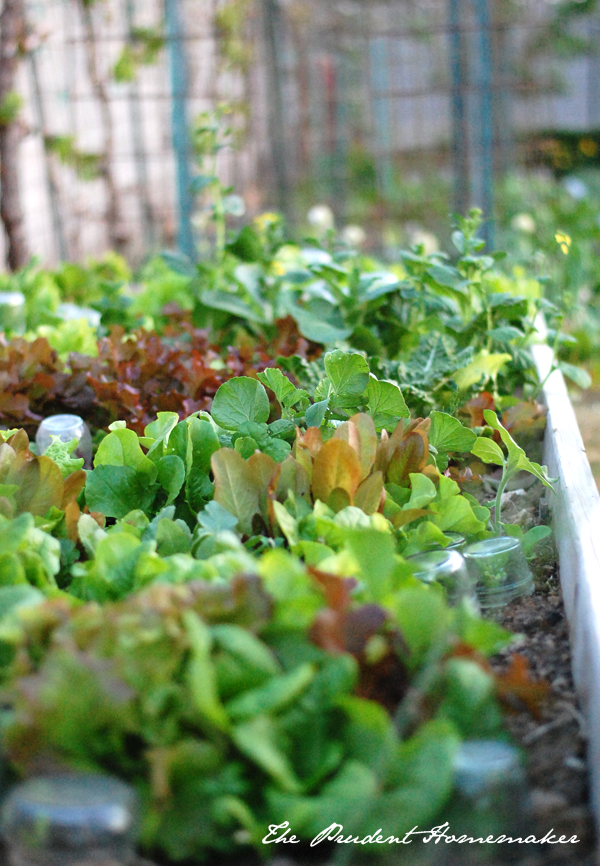
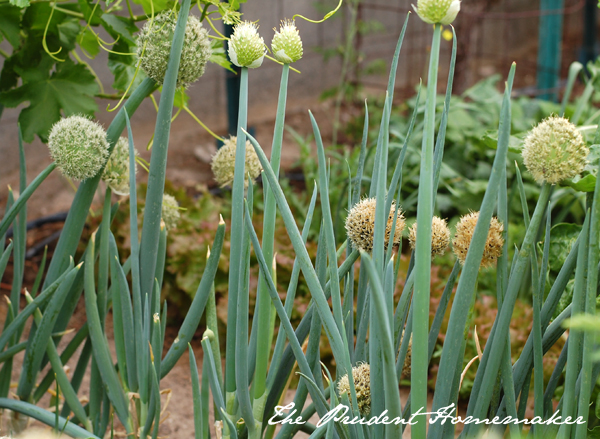
On the east side of the garden, I grow grapes along the wall. In front of the grapes, I grow carrots, broccoli, turnips, leeks, beets, lettuce, garlic, onions, and spinach. The green onions grow all year long. and reseed themselves rach year. I haven’t bought green onions since I first planted these in 2007.
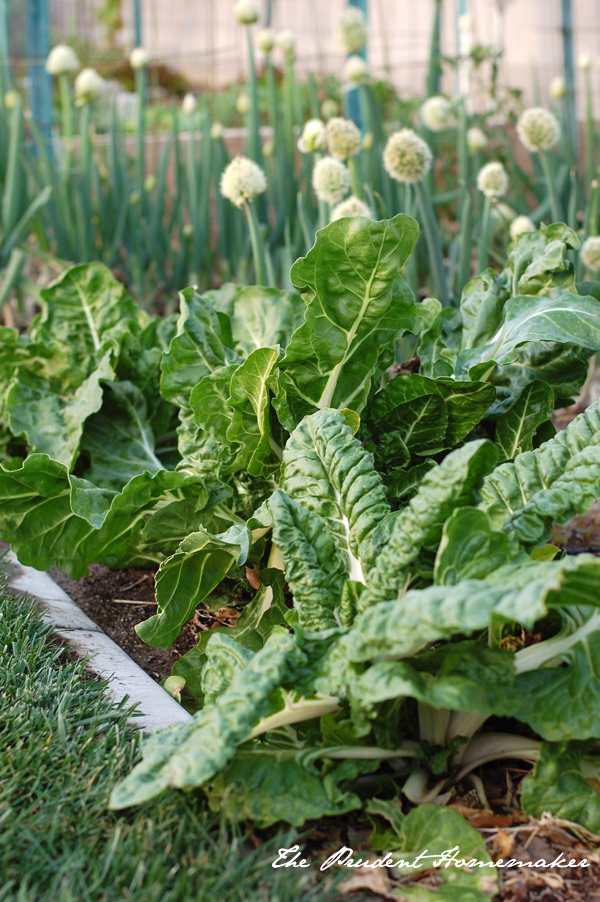
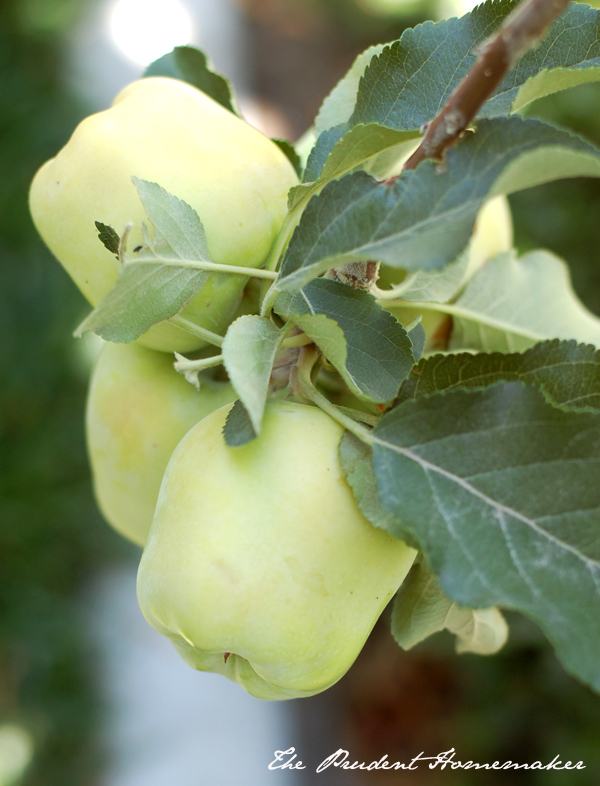
In the southeast corner of the garden, I have four fruit trees: a Mission Fig, a Green Gage Plum, a Desert Gold peach, and a Dorsett Golden apple. This self-fertile apple does not require any chilling hours, and ripens here in late June.
The Desert Gold Peach is a self-fertile peach, it is a semi-freestone (the fruit clings somewhat to the stone). Under the trees along the wall I grow Swiss chard all year.
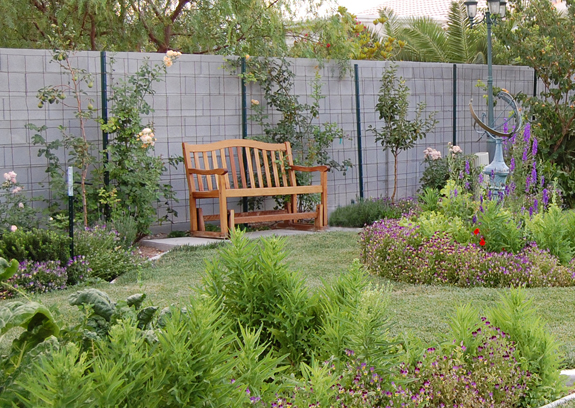
This is the center of my garden. Along the back wall I am growing Graham Thomas climbing roses in the center.
On either side of the bench, there is French lavender, and above that, a Bartlett pear tree on each side. These were planted in the fall of 2008. Though Bartletts are a high-chill pear, and I live in an area with low chilling hours, I am experimenting with growing them anyway. On the other side of the pear trees are bush roses. Behind the bush roses are foxglove.
In the front planter (on the right) I have lettuce and Swiss chard growing under an Early Elberta (mid-chill, and a freestone peach). I grow butternut squash under the peach tree all summer. On the other side of the lamp post, I have an apple tree, under which I grow borage, chamomile, and more butternut squash.
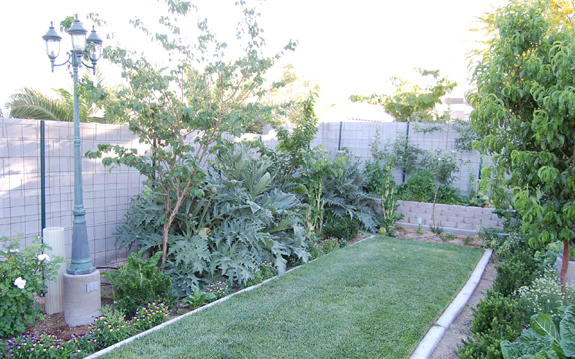
To the right of the circle, I have a Royal Apricot tree and a Stella Cherry. Both are self-fertile. As this is an area of the country that does not get real cold in winter, it is questionable to grow cherries here. In the winter, the entire back planter is in the shade, and is cooler.
On the west side of my yard was a slope. We removed the dirt, and built a wall (on top of a concrete edge, making it easier to mow and edge the lawn). The slope became a flat planter as we filled it in with good soil. Along the mesh, close to the wall, espaliered apple trees grow the length of the wall. Every six feet there is a dwarf citrus tree.
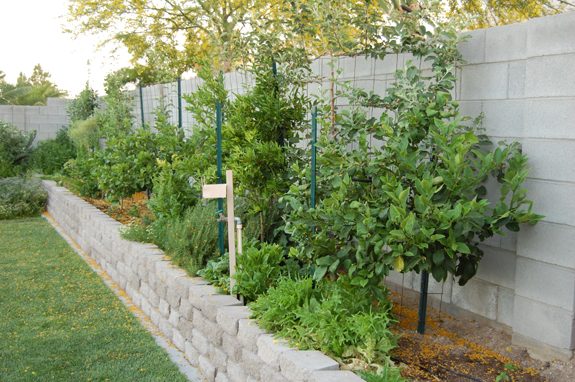
Under the citrus trees, I grow herbs and strawberries.
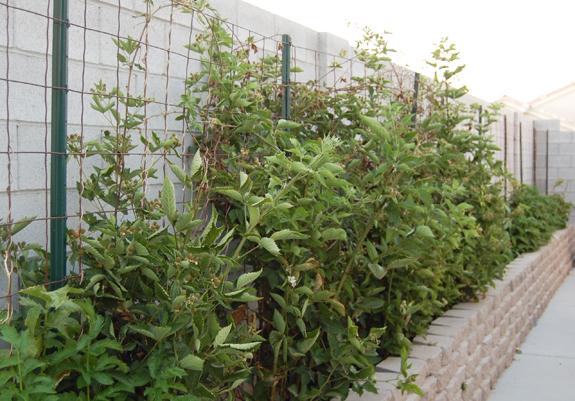
If you turn around 180º, you’ll see the same planter, but not as deep. Here the dirt is only a foot from the wall. This gives us space to walk around the a/c units. On this side, I grow thornless blackberries.
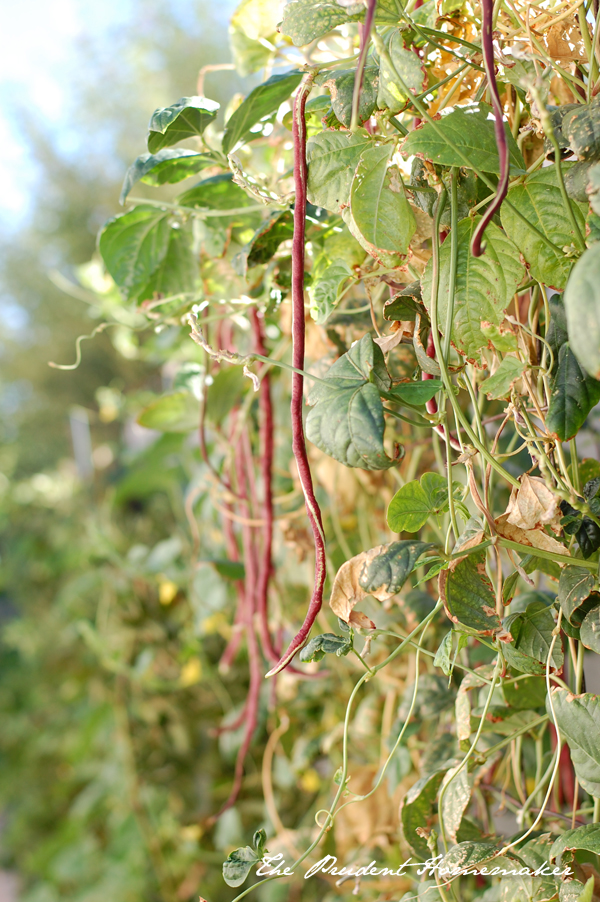
On one section of the wall , I grow red noodle beans in summer.
If you have a small garden, remember to use the vertical growing space in your garden (be it a wall, a fence, trellises, or poles).
You don’t have to sacrifice beauty for food; in fact, you can have both!
